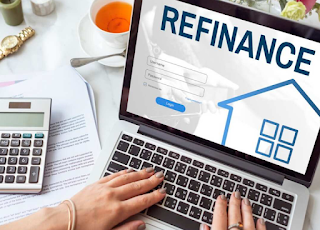How to Refinance Your Mortgage for Better Rates: A Step-by-Step Guide
Refinancing the mortgage might be the most prudent option available to many homeowners who wish to reduce their monthly repayments or seek to alter any specific loan terms. First and foremost, refinancing requires that house owners look around for a lender offering them better rates. They must carefully weigh options against each other to come up with a deal which best suites their financial circumstances.
Refinancing involves gathering documents and understanding the requirements. A homeowner has to look into his or her credit score and income because both can have a great deal of effect on the rates being offered. Knowing what to expect from the lender will help smooth out the process and result in a more positive outcome.
It can save quite a significant amount of money over time if acted upon now. Refinancing, if done with the right strategy, will offer a better interest rate and favorable conditions of the loan which will definitely be worth consideration for many homeowners.
Key Takeaways
- Homeowners should shop around to find superior mortgage rates.
- Understanding credit and income requirements provides the insight to enhance refinancing opportunities.
- Saving money by refinancing requires an intentional approach.
Understanding Mortgage Refinancing
By refinancing, it helps the homeowners to lower their monthly payments or tap into their home's equity. This is actually taking a new loan to replace an existing mortgage.
The Basics of Mortgage Refinancing
Mortgage refinancing is about taking a loan to pay off an old one. Homeowners generally do this to get better interest rates or for changing the terms of their mortgage.
The new loan might have a lower interest rate and enable the owners to save on their monthly payments. There are different kinds of refinancing, such as rate-and-term refinancing, cash-out refinancing, and streamline refinancing. Each one has different purposes and benefits.
This means that, besides the interest rates, one has to pay the closing costs, which, together with other costs, determine the actual savings from refinancing. The reason behind this will be the calculation of the break-even point, which depicts for what period of time refinancing will pay off the costs of the new loan.
Advantages of Re-financing to Get Better Rates
Refinancing offers several good options, especially when interest rates decrease. One of the major benefits associated with refinancing is the potential for lower monthly payments.
Lowering the interest rate can also decrease the total amount paid over the course of the loan. This saving can be quite substantial, thereby making refinancing attractive to many homeowners.
Another great benefit is the potential to alter the term of the loan. Homeowners might go from a 30-year mortgage and refinance into a 15-year mortgage; thus, they pay off the loan more quickly. The result of this can be substantial savings in interest payments.
Ultimately, refinancing enables a homebuyer to have stronger control over their finances and provide ease regarding mortgage payments.
Evaluate Your Current Mortgage
Before going forward under refinancing, a homebuyer is required to evaluate his/her present mortgage. There are aspects that need to be considered by the lender, including interest rate, loan term, and outstanding amount.
This is generally a good canddate for refinancing if the mortgage carries a high-interest rate. Another important feature homeowners want to see is the remaining loan term to make out whether now is the right time for refinancing. If they are close to paying off the current mortgage, limited benefits could be realized.
It is also very vital to review the present financial scenario. In this regard, credit rating, income, and accumulation of debt will affect the way refinancing can be approached. Knowing it will also help in making a perfect refinancing decision.

